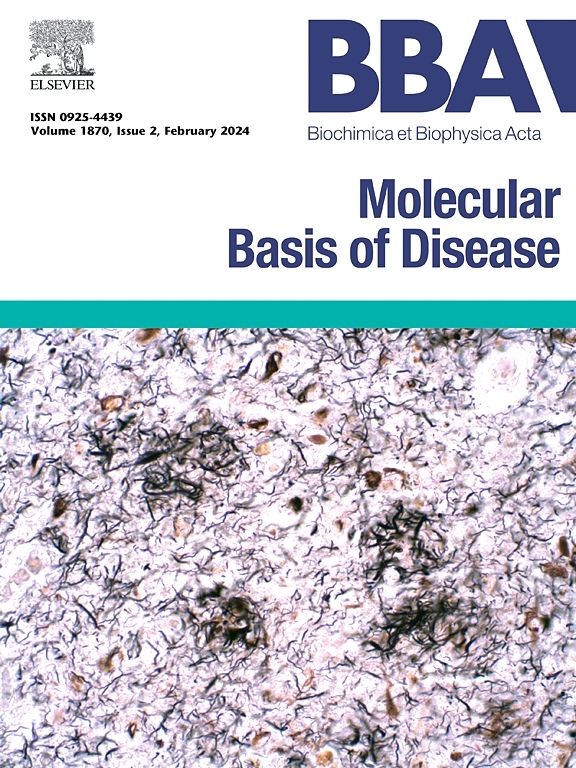Keloid vasculature reacts to intralesional injection therapies but does not predict the response to treatment: Biopsies from double-blinded, randomized, controlled trial
IF 4.2
2区 生物学
Q2 BIOCHEMISTRY & MOLECULAR BIOLOGY
Biochimica et biophysica acta. Molecular basis of disease
Pub Date : 2025-03-15
DOI:10.1016/j.bbadis.2025.167790
引用次数: 0
Abstract
Keloids are benign fibroproliferative skin scars that expand beyond the original wound site. Hypoxia and angiogenesis are thought to drive pathological scar formation in keloids. We utilized biopsies collected before, during and after the double-blinded randomized controlled trial (RCT) comparing the intralesional treatments of 5-fluorouracil and triamcinolone injections in 48 human keloids. We could not detect any cells expressing the hypoxia markers (carbonic anhydrase 9 and hypoxia-inducible factor 1α) in the three distinct regions of keloid dermis. The amount of epidermal hypoxia could not predict the response to treatment. The middle dermis of the patients obtaining a clinical response to the intralesional injections showed significant increase in mature blood vessels and in lymphatics after the treatment. Our study does not support hypoxia being the driver behind keloid formation but demonstrates that the patients obtaining a response to intralesional therapies develop more blood vessels and lymphatics in the middle dermis of the keloids during the treatment.

瘢痕疙瘩血管对局部注射疗法有反应,但不能预测治疗反应:来自双盲随机对照试验的活组织样本
瘢痕疙瘩是一种良性的纤维增生性皮肤疤痕,可扩展到原始伤口以外。缺氧和血管生成被认为是瘢痕疙瘩病理瘢痕形成的驱动因素。我们利用在双盲随机对照试验(RCT)之前、期间和之后收集的活组织切片,比较5-氟尿嘧啶和曲安奈德注射在48例人类瘢痕疙瘩的病灶内治疗。我们在瘢痕疙瘩真皮的三个不同区域未检测到任何表达缺氧标志物(碳酸酐酶9和缺氧诱导因子1α)的细胞。表皮缺氧量不能预测治疗效果。对病灶内注射有临床反应的患者的真皮中部,治疗后成熟血管和淋巴管显著增加。我们的研究不支持缺氧是瘢痕疙瘩形成背后的驱动因素,但表明对病灶内治疗有反应的患者在治疗期间在瘢痕疙瘩的真皮中部发展了更多的血管和淋巴管。
本文章由计算机程序翻译,如有差异,请以英文原文为准。
求助全文
约1分钟内获得全文
求助全文
来源期刊
CiteScore
12.30
自引率
0.00%
发文量
218
审稿时长
32 days
期刊介绍:
BBA Molecular Basis of Disease addresses the biochemistry and molecular genetics of disease processes and models of human disease. This journal covers aspects of aging, cancer, metabolic-, neurological-, and immunological-based disease. Manuscripts focused on using animal models to elucidate biochemical and mechanistic insight in each of these conditions, are particularly encouraged. Manuscripts should emphasize the underlying mechanisms of disease pathways and provide novel contributions to the understanding and/or treatment of these disorders. Highly descriptive and method development submissions may be declined without full review. The submission of uninvited reviews to BBA - Molecular Basis of Disease is strongly discouraged, and any such uninvited review should be accompanied by a coverletter outlining the compelling reasons why the review should be considered.

 求助内容:
求助内容: 应助结果提醒方式:
应助结果提醒方式:


